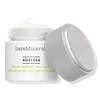What's inside
What's inside
 Key Ingredients
Key Ingredients

 Benefits
Benefits

 Concerns
Concerns

 Ingredients Side-by-side
Ingredients Side-by-side

Water
Skin ConditioningCaprylic/Capric Triglyceride
MaskingGlycerin
HumectantPolyglyceryl-3 Distearate
EmulsifyingPropanediol
SolventLinum Usitatissimum Seed Oil
PerfumingCetearyl Alcohol
EmollientBakuchiol
AntimicrobialCamellia Sinensis Leaf Extract
AntimicrobialCoffea Arabica Leaf/Seed Extract
MaskingGlycyrrhiza Glabra Root Extract
BleachingCarbomer
Emulsion StabilisingDimethicone
EmollientTocopheryl Acetate
AntioxidantGlyceryl Stearate Citrate
EmollientPhenoxyethanol
PreservativeEthylhexylglycerin
Skin ConditioningSodium Hydroxide
BufferingWater, Caprylic/Capric Triglyceride, Glycerin, Polyglyceryl-3 Distearate, Propanediol, Linum Usitatissimum Seed Oil, Cetearyl Alcohol, Bakuchiol, Camellia Sinensis Leaf Extract, Coffea Arabica Leaf/Seed Extract, Glycyrrhiza Glabra Root Extract, Carbomer, Dimethicone, Tocopheryl Acetate, Glyceryl Stearate Citrate, Phenoxyethanol, Ethylhexylglycerin, Sodium Hydroxide
Water
Skin ConditioningGlycerin
HumectantButylene Glycol
HumectantSqualane
EmollientDimethicone
EmollientDipropylene Glycol
HumectantC10-18 Triglycerides
EmollientCetearyl Olivate
Gossypium Herbaceum Seed Oil
Skin ConditioningPentaerythrityl Tetraethylhexanoate
EmollientCetyl Alcohol
EmollientSorbitan Olivate
EmulsifyingDiisostearyl Malate
EmollientNylon-12
Myristyl Myristate
EmollientGlyceryl Stearate Se
EmulsifyingTrehalose
HumectantButyrospermum Parkii Butter
Skin ConditioningChondrus Crispus Extract
Skin ConditioningBidens Pilosa Extract
HumectantPalmitoyl Tripeptide-5
Skin ConditioningSh-Hexapeptide-2
Skin ConditioningPalmitoyl Tripeptide-1
Skin ConditioningPalmitoyl Tetrapeptide-7
Skin ConditioningHydrolyzed Hyaluronic Acid
HumectantSodium Hyaluronate
HumectantGluconolactone
Skin ConditioningCetearyl Alcohol
EmollientCetyl Palmitate
EmollientSorbitan Palmitate
EmulsifyingSorbitan Oleate
EmulsifyingTocopherol
AntioxidantPolysilicone-11
Dimethicone Crosspolymer
Emulsion StabilisingHydrogenated Polyisobutene
EmollientBehenyl Alcohol
EmollientStearyl Alcohol
EmollientDimethylacrylamide/Sodium Acryloyldimethyltaurate Crosspolymer
Ethylhexylglycerin
Skin ConditioningPolyacrylate Crosspolymer-6
Emulsion StabilisingT-Butyl Alcohol
PerfumingXanthan Gum
EmulsifyingSodium Citrate
BufferingCitric Acid
BufferingDisodium EDTA
Carbomer
Emulsion StabilisingPolysorbate 20
EmulsifyingSodium Lactate
BufferingSodium Benzoate
MaskingPhenoxyethanol
PreservativeWater, Glycerin, Butylene Glycol, Squalane, Dimethicone, Dipropylene Glycol, C10-18 Triglycerides, Cetearyl Olivate, Gossypium Herbaceum Seed Oil, Pentaerythrityl Tetraethylhexanoate, Cetyl Alcohol, Sorbitan Olivate, Diisostearyl Malate, Nylon-12, Myristyl Myristate, Glyceryl Stearate Se, Trehalose, Butyrospermum Parkii Butter, Chondrus Crispus Extract, Bidens Pilosa Extract, Palmitoyl Tripeptide-5, Sh-Hexapeptide-2, Palmitoyl Tripeptide-1, Palmitoyl Tetrapeptide-7, Hydrolyzed Hyaluronic Acid, Sodium Hyaluronate, Gluconolactone, Cetearyl Alcohol, Cetyl Palmitate, Sorbitan Palmitate, Sorbitan Oleate, Tocopherol, Polysilicone-11, Dimethicone Crosspolymer, Hydrogenated Polyisobutene, Behenyl Alcohol, Stearyl Alcohol, Dimethylacrylamide/Sodium Acryloyldimethyltaurate Crosspolymer, Ethylhexylglycerin, Polyacrylate Crosspolymer-6, T-Butyl Alcohol, Xanthan Gum, Sodium Citrate, Citric Acid, Disodium EDTA, Carbomer, Polysorbate 20, Sodium Lactate, Sodium Benzoate, Phenoxyethanol
Ingredients Explained
These ingredients are found in both products.
Ingredients higher up in an ingredient list are typically present in a larger amount.
Carbomer is a polymer of acrylic acid. Its main role is to create a gel consistency.
A high amount of carbomer can cause pilling or balling up of products. Don't worry, most products contain 1% or less of carbomer.
Cetearyl alcohol is a mixture of two fatty alcohols: cetyl alcohol and stearyl alcohol. It is mainly used as an emulsifier. Emulsifiers help prevent the separation of oils and products. Due to its composition, it can also be used to thicken a product or help create foam.
Cetearyl alcohol is an emollient. Emollients help soothe and hydrate the skin by trapping moisture.
Studies show Cetearyl alcohol is non-toxic and non-irritating. The FDA allows products labeled "alcohol-free" to have fatty alcohols.
This ingredient is usually derived from plant oils such as palm, vegetable, or coconut oils. There is debate on whether this ingredient will cause acne.
Due to the fatty acid base, this ingredient may not be Malassezia folliculitis safe.
Learn more about Cetearyl AlcoholDimethicone is a type of synthetic silicone created from natural materials such as quartz.
What it does:
Dimethicone comes in different viscosities:
Depending on the viscosity, dimethicone has different properties.
Ingredients lists don't always show which type is used, so we recommend reaching out to the brand if you have questions about the viscosity.
This ingredient is unlikely to cause irritation because it does not get absorbed into skin. However, people with silicone allergies should be careful about using this ingredient.
Note: Dimethicone may contribute to pilling. This is because it is not oil or water soluble, so pilling may occur when layered with products. When mixed with heavy oils in a formula, the outcome is also quite greasy.
Learn more about DimethiconeEthylhexylglycerin (we can't pronounce this either) is commonly used as a preservative and skin softener. It is derived from glyceryl.
You might see Ethylhexylglycerin often paired with other preservatives such as phenoxyethanol. Ethylhexylglycerin has been found to increase the effectiveness of these other preservatives.
Glycerin is already naturally found in your skin. It helps moisturize and protect your skin.
A study from 2016 found glycerin to be more effective as a humectant than AHAs and hyaluronic acid.
As a humectant, it helps the skin stay hydrated by pulling moisture to your skin. The low molecular weight of glycerin allows it to pull moisture into the deeper layers of your skin.
Hydrated skin improves your skin barrier; Your skin barrier helps protect against irritants and bacteria.
Glycerin has also been found to have antimicrobial and antiviral properties. Due to these properties, glycerin is often used in wound and burn treatments.
In cosmetics, glycerin is usually derived from plants such as soybean or palm. However, it can also be sourced from animals, such as tallow or animal fat.
This ingredient is organic, colorless, odorless, and non-toxic.
Glycerin is the name for this ingredient in American English. British English uses Glycerol/Glycerine.
Learn more about GlycerinPhenoxyethanol is a preservative that has germicide, antimicrobial, and aromatic properties. Studies show that phenoxyethanol can prevent microbial growth. By itself, it has a scent that is similar to that of a rose.
It's often used in formulations along with Caprylyl Glycol to preserve the shelf life of products.
Water. It's the most common cosmetic ingredient of all. You'll usually see it at the top of ingredient lists, meaning that it makes up the largest part of the product.
So why is it so popular? Water most often acts as a solvent - this means that it helps dissolve other ingredients into the formulation.
You'll also recognize water as that liquid we all need to stay alive. If you see this, drink a glass of water. Stay hydrated!
Learn more about Water